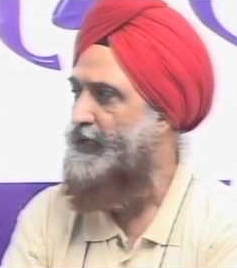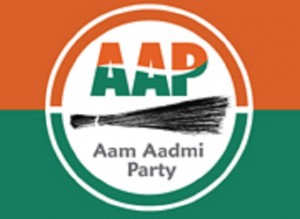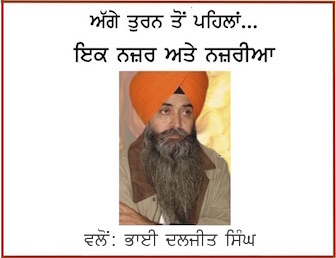Articles/Opinion
OP-Ed: Punjabis Shun Modi, Flock To AAP
May 26, 2014 | By Jaspal Singh Sidhu

Jaspal Singh Sidhu
At historically crucial junctures, Punjab has shown the audacity to differ with the Indian mainstream. This is what goes to explain the phenomenal victory of the Aam Aadmi Party (AAP) in Punjab which, otherwise, drew blank from other parts of the country, also in Delhi where it had emerged as a political force with Arun Kejriwal as Chief Minister only six months ago. Of the total 13, AAP has won four parliamentary constituencies —- Sangrur, Faridkot, Patiala and Fatehgarh Sahib—scoring 24.4 per cent share of the polled votes to lag behind only by 1.9 per cent from the ruling Shiromani Akali Dal (26.3 per cent). The Congress won three seats—- Amritsar, Jalandhar and Ludhiana securing the highest 33.1 per cent vote share.
Examining assembly segment-wise performance, of the total 117 assembly segments AAP achieved second position with its lead in 33 segments as the Congress topped the list with its lead in 37. The ruling Shiromani Akali Dal has been relegated to the third slot with a lead in 29 segments and its coalition partner, the BJP, remaining number one only in 16 assembly constituencies.
 Remarkably, before parliamentary elections —- even till today —- AAP had no organisational set-up worth the name in Punjab and its high command appointed leadership could hardly get along with the local party enthusiasts. The volunteers of AAP were pulsating and girding their loin in its support even as none of its candidate had come to the fore. The absence of AAP in the election arena, as per keen observers, left volunteers, mostly the youth restless, particularly when the BJP and Shiromani Akali Dal campaigning had reached the full gear mould. AAP announced the names of candidates of some of the constituencies at the last moment. AAP leaders — Kejriwal and Yogendra Yadav — campaigned only for two-three days in Punjab while AAP’s Punjab leadership palpably lacked initiative and will to mobilise the people and to tinker the incendiary situation already got built up against the Akali-BJP rulers for their misrule, corruption and bulling tactics.
Remarkably, before parliamentary elections —- even till today —- AAP had no organisational set-up worth the name in Punjab and its high command appointed leadership could hardly get along with the local party enthusiasts. The volunteers of AAP were pulsating and girding their loin in its support even as none of its candidate had come to the fore. The absence of AAP in the election arena, as per keen observers, left volunteers, mostly the youth restless, particularly when the BJP and Shiromani Akali Dal campaigning had reached the full gear mould. AAP announced the names of candidates of some of the constituencies at the last moment. AAP leaders — Kejriwal and Yogendra Yadav — campaigned only for two-three days in Punjab while AAP’s Punjab leadership palpably lacked initiative and will to mobilise the people and to tinker the incendiary situation already got built up against the Akali-BJP rulers for their misrule, corruption and bulling tactics.
Interestingly, AAP got such a warm response even when the candidates remained restricted to some areas and left most of the towns and villages unvisited in their constituencies. With stark paucity of resources, the AAP candidates could not distribute even their propaganda material in far flung villages. Most of the voters had only heard about AAP and did not know about the candidate and did not see his or her picture they were voting for. Ms Yamini Gomar, running a non-descriptive computer training school in Hoshiarpur, polled more than two lakh votes ( 22 per cent of polled votes) and, in Jalandhar, greenhorn Jyoti Mann of AAP secured 2.54 lakh votes when Congress candidate Santokh Singh won getting three lakh votes. And AAP candidate from Anandpur Sahib constituency, Himat Singh Shergill, new to public life, trounced Congress candidate Ambika Soni in Nawanshahar areas where her party had been strongest and Akali candidate P.S. Chandumajra won only by a sleek margin.
Surely, the common man in Punjab has been nursing an anger against the Shiromani Akali-BJP government headed by the dynastic ruling family — the Badals —- which came to power for the second time in succession in the 2012 assembly polls. The corruption, inflation and governing deficit of the UPA 2 at New Delhi also left a streak of resentment also against the Congress party, which, otherwise, has been a divided house in Punjab. No doubt, the ruling combine with their bullying style of governance has earned severe disaffection with the electorate as compared to the Congress. But AAP has provided the electorate an alternative otherwise having no other choice, Punjabis would have gone in favour of the Congress. In that case, polling would not have been so brisk as witnessed.
It is pertinent to underline, the Punjabis did not lap up Moditva as the Indian mainstream did in the Hindi hinterland while rejecting both traditional parties in a big way for different reasons. In Haryana, adjoining Punjab, the BJP got 7 out 10 seats where it has always been piggybacking local parties and never had state leadership worth noticing. In fact, the Modi wave — a development mantra wrapped around Hindutva core —- did not cut much ice with a majority of Punjabis, particularly Sikhs, who voted, practically on their own —- and spontaneously —- in favour of AAP.
This goes to vouchsafe for what evidenced during Modi’s personal campaign in Punjab. Though the ruling Akali-BJP combine managed crowds at his election rallies in Punjab, but the Hindu leader —- the Hindutva mascot —- could not elicit that ebullience from the audience as was witnessed in the shape of loud ranting in the Hindi belt outside Punjab. Though, Modi donned a turban at each of his rally in Punjab but his utterance of Sikh slogan ‘Bole-so-Nihaal’ did not evoke the expected response from the gathering. The repeated coaxing of Chief Minister Parkash Singh Badal to the audience for eliciting a warm response to ‘turbaned’ Modi at the Moga public meeting did not work. Instead, Modi earned negative attributions in Sikh confabulations for not visiting the Golden Temple despite his holding rallies in nearby areas.
The Modi wave which swept across the country, could not secure the victory of BJP’s heavyweight leader Arun Jaitley from Amritsar seat where he lost to Capt Amrinder Singh despite using vast resources, funds and backing of state rulers. Perhaps, Mr Jaitley was pitted to contest from there to consolidate the BJP’s stranglehold in Punjab as the existing state leadership is considered not up to the mark for delivering intended political dividends to the party.
AAP’s unimagined success in Punjab has its roots in the culture and history of the area, particularly, of the Sikhs as the latter have always been acting differently to what the Indian mainstream id doing at a peculiar juncture. The Sikhs’ contribution to the Independence struggle against British was much more than their population strength. During the 16-year long struggle for Punjabi suba, a Punjabi language province, the ruling Congress managed a country-wide political consensus against the demand, referred to as that of the Sikhs alone. The Emergency of 1975 was opposed in Punjab from day one and Punjab fought for autonomy of states and decentralisation of powers when Indira Gandhi was hailed as ‘Durga’ even by the Opposition . And Punjab endured a decade-long bloodshed in 1980s as soft-Hindutva flowed through the persona of Indira Gandhi who earned countrywide political consensus for transgressing all democratic norms and niceties for the use of force in preserving ‘unity and integrity’ of ‘Indian Nation sought to be built on western model’.
Thereafter, the Centre-sponsored agenda of maintaining ‘internal security and peace’ in Punjab saw to it that only two political outfits – Congress and Shiromani Akali Dal-BJP should share the political space in the state. And these political players ruled Punjab by turn for about two decades, practically with blessings of the New Delhi rulers.
In the process, participatory democracy lost its space and that dispensation suffocated the forward-looking people of Punjab. And they saw a ‘political alternative’ in AAP to escape from the goonda rule in Punjab operating through the police and bureaucratic network which remains as oppressive as it was intended to be by New Delhi while raising a ‘repressive machinery’ to suppress the political dissent brewed up in 1980s.
Jaspal Singh Sidhu retired as Special Correspondent with UNI, New Delhi and has been writing on political and economic issues. He can be reached at E-mail. jaspal.sdh@gmail.com
To Get Sikh Siyasat News Alerts via WhatsApp:
(1) Save Our WhatsApp Number 0091-855-606-7689 to your phone contacts; and
(2) Send us Your Name via WhatsApp. Click Here to Send WhatsApp Message Now.
Sikh Siyasat is on Telegram Now. Subscribe to our Telegram Channel
Related Topics: Aam Aadmi Party, Indian State, Jaspal Singh Sidhu, Lok Sabha Elections 2014




